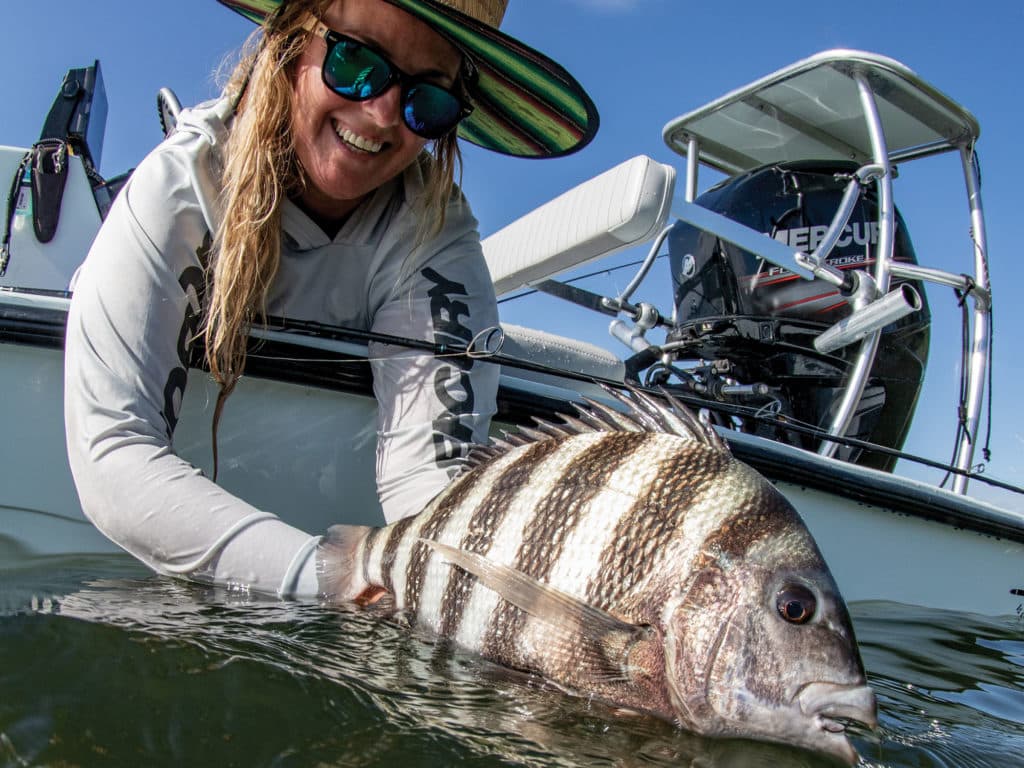
The times they are a-changin’—again. Back in the 1920s, New Jersey was not known as a striped bass haven, but rather the channel bass (red drum or redfish) capital of the East Coast. Apparently, redfish were more commonplace in the Garden State than stripers a century ago. And for the past 10 years, the Northeast has again seen an increase in reds in local waters, only now they’re bringing along a host of warm-water friends.
That’s right, reports indicate sheepshead, speckled trout, cobia, and both Spanish and king mackerel are also migrating farther north, reaching Northeast waters en masse. Here’s a look at their cyclical patterns, and when and how to target them successfully.
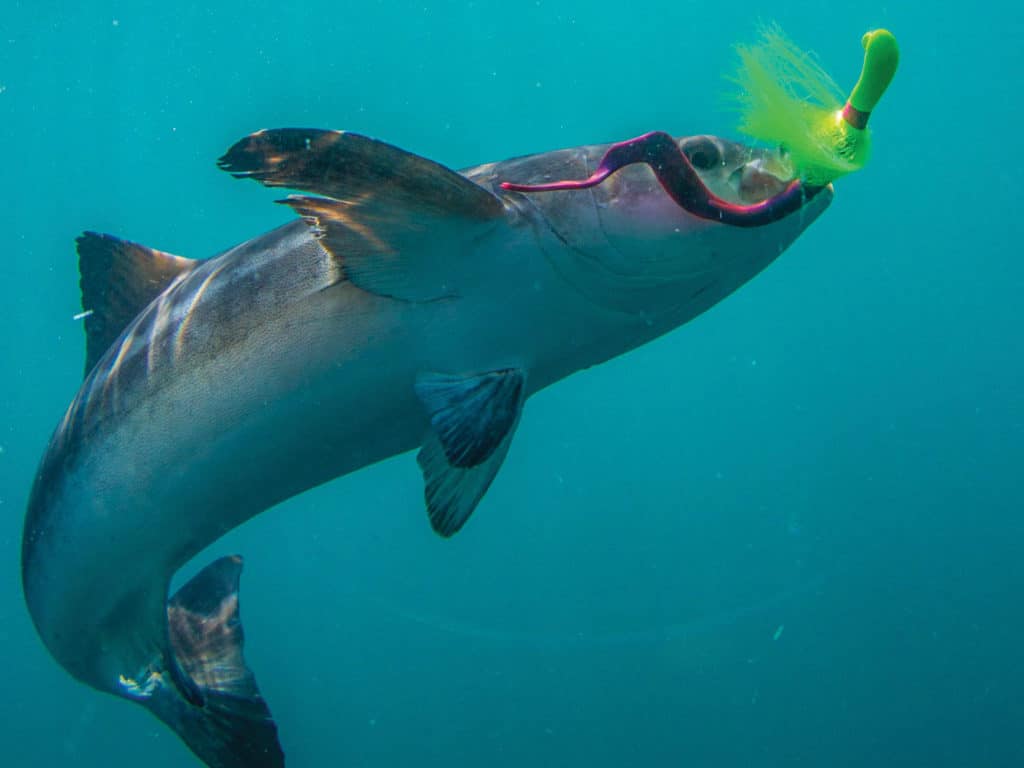
Comeback Cobia
While cobia have not exactly been a dependable catch off New Jersey shores, there is a size and bag limit for them, and the current state record of 90 pounds, 8 ounces was caught in 2019 at McCrie Shoal off Cape May. Capt. Al Crudele of Bayhound Charters has seen cobia in Jersey waters for a long time. “I remember catching them in the ’80s, but they seem to be resurging now, probably due to global warming and its effect on ocean temps, or perhaps it’s a cyclical phase,” the fishing guide says.
Cobia migrate to the area when water temps reach 70 degrees or higher, usually showing up in June as they glide in with mako sharks along the 30-fathom line. Crudele believes they stick to the buoys and follow sea turtles offshore to start. “Then the pods move inshore to within 5 miles of the coast in July. In August, they reach the 2FB and 5FB areas, even patrolling the 20-fathom-line-area lobster pots, sometimes coming as close as 1 mile from shore, hanging around the Sea Isle Buoy.”
Cobia are known to gravitate toward the same floating structures. If you find some along a certain pot line or a specific buoy, they are likely to show up there again next year. “But you have to get them to come off the pots to inspect what’s going on around your boat; otherwise, you’ll need to spot them in open water and stealthily creep up on them,” Crudele says. “I send out a live bunker or eel if they’re cautious, and figure-eight a bucktail tipped with a slender rubber bait if they appear curious boatside.”
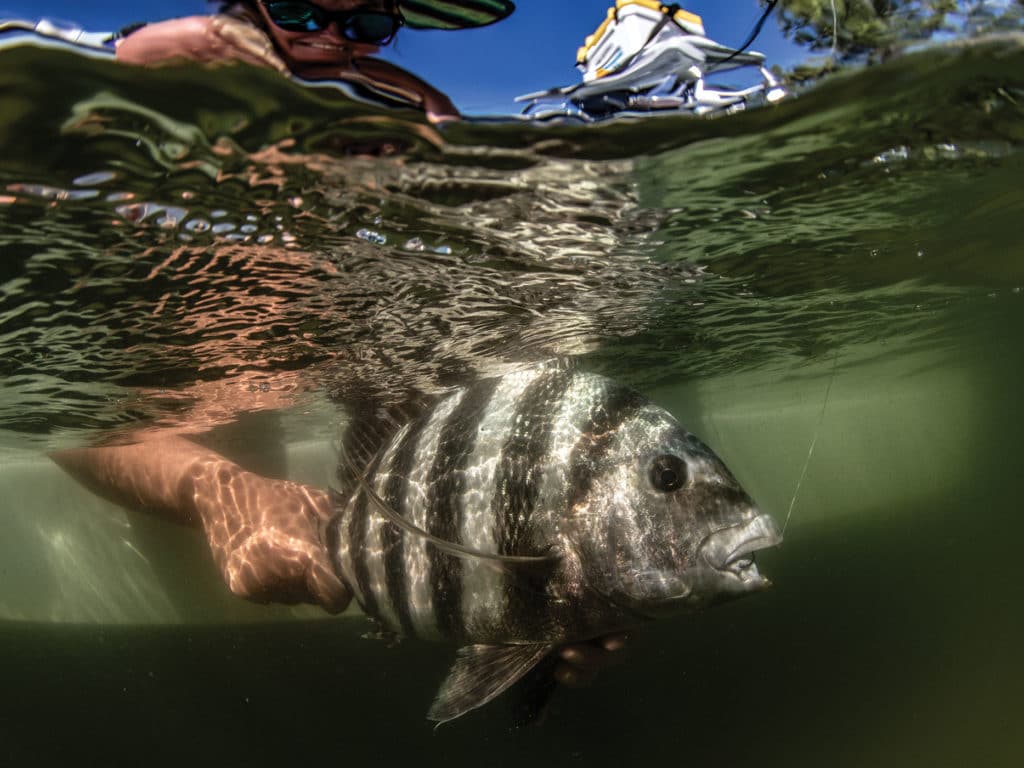
Herding Sheepshead
Sheepshead Bay off Brooklyn, New York, was named as such for a reason. Sheepshead historically populated the Northeast waters. “If you just look at the 1920s catch reports from Cape May County, New Jersey, they’re all about red drum and sheepshead,” says Capt. Dan Schafer of Insomniac Guide Service. “I’ve been catching sheeps for the past 13 years now as they seem to be coming back to their historical northern home range. I think their return is directly related to habitat restoration and the improvement of oyster beds.”
Schafer claims prime time is from May into October, when water temps range from 58 to 75 degrees. “In May, when the water gets to 57 degrees, sheepshead migrate into our backwaters. A few years ago, we saw mostly 6- to 13-pound fish, but now we’re also seeing 3- to 8-pounders, and even more fish in the 1- to 3-pound range, so they may be breeding and repopulating the area.” He adds that finding juveniles in the conch traps in January is becoming more common. “I think sheepshead follow the black drum spawn in the May moons.” Schafer has also found sheepshead on nearshore wrecks and inlet areas, to the point where they are replacing tautog in the backwater spots.
His go-to rig is a 1-ounce Bottom Sweeper jig tipped with Asian or fiddler crab, half a green crab or a sand flea. “I pick a bridge piling and drop the crab down about 3 feet. If it doesn’t get hit in a minute, I drop it another 3 feet and so on until it hits bottom, then repeat the process. After a few unsuccessful drops, I try another piling.”
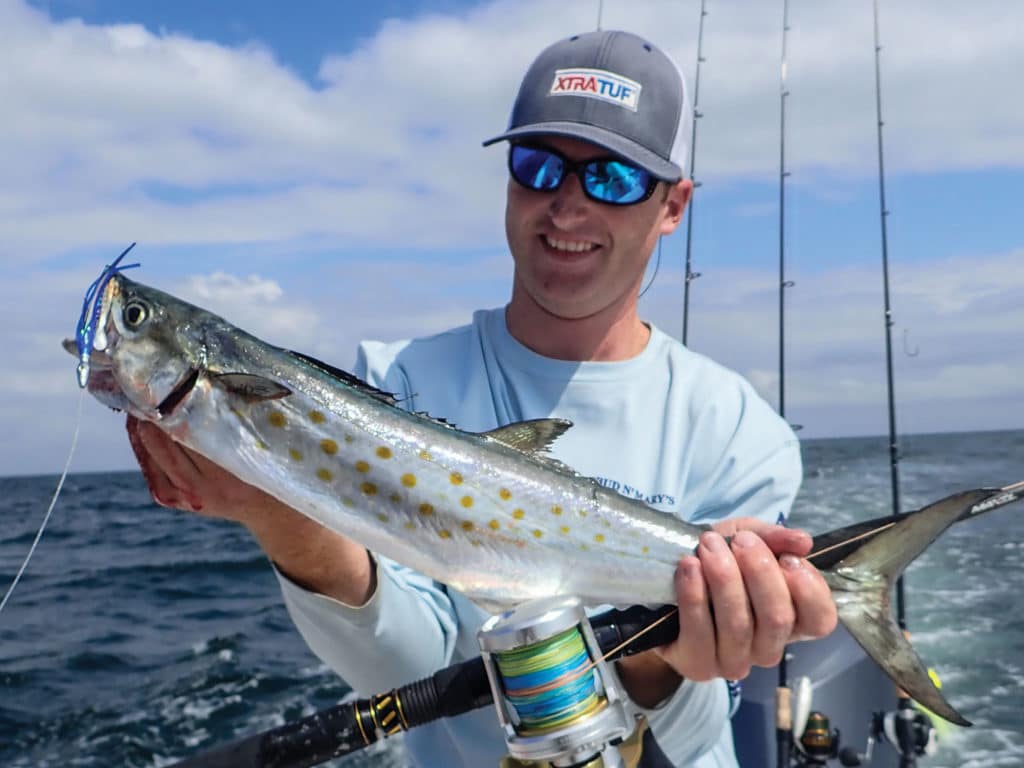
Mackerel Matters
Jim Louro of Vicky Lynn Sportfishing has been ripping Spanish and king mackerel in Jersey for the past three summers. “They’re hot during July and August, but start showing up in June and last through September, when -water temps hover between 68 and 78 degrees,” he says. “I scan for mackerel jumping and other visuals, like surface activity or terns diving on small baitfish. And since schools of Spanish move fast, I’ll constantly move around.”
Spanish macks are suckers for shiny metals such as the Savage Gear Glass Minnow, Deadly Dick No. 4 or Williamson Gomoku 30g jig. Morning hours, from sunrise to around 10 a.m., offer the best shot at hooking up as the macks feed aggressively on schools of rainfish and bay anchovies. “I bump out to the Manasquan Ridge in 40 to 60 feet of water to find a lot of Spanish and a few kings. But many times I just stay right in front of the Manasquan and Shark River inlets on the outgoing tides as the mackerel stage there and feed on bait schools pouring out.”
Last year, Louro started finding some king mackerel close to shore, jigging up 5- to 8-pounders at the Manasquan Ridge in 15 to 40 feet of water. Many tuna anglers reported hooking into 10- to 15-pound kings offshore as well.
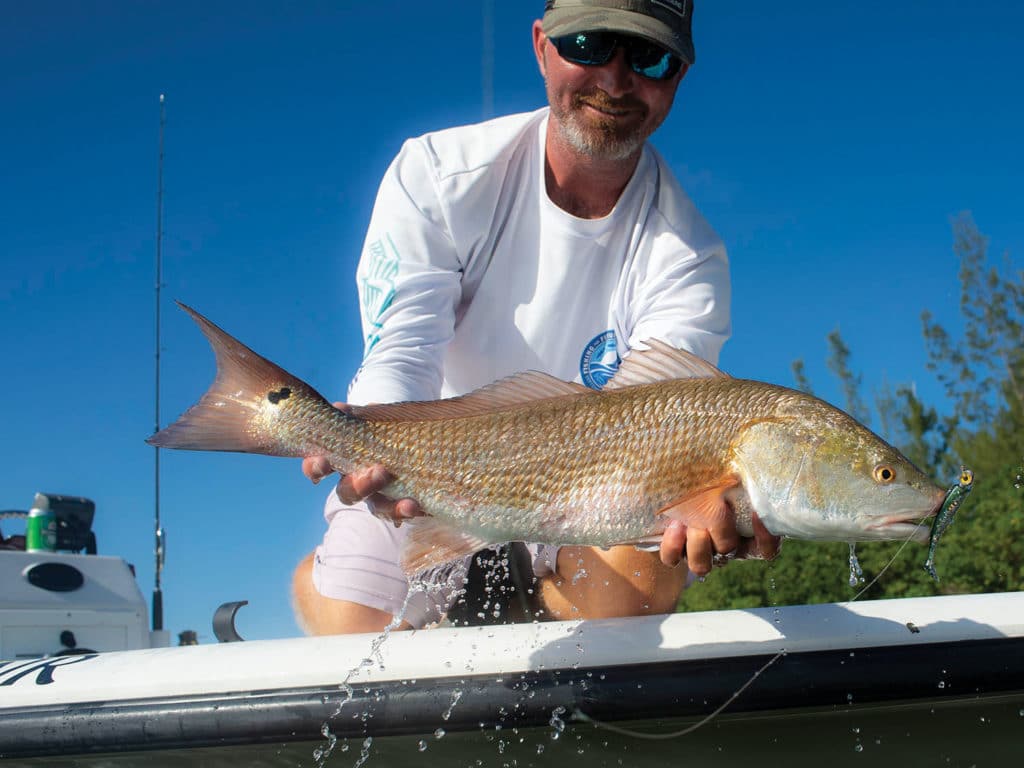
Reds and Specks
Tattered sepia-toned photographs hanging on the walls of New Jersey dockside bars detail thousands of red drum spilled along the dock planks. As recently as the 1930s, reds were so prominent in Jersey that they were considered a nuisance.
Both redfish and their cousin, the speckled trout, are finding their way back into South Jersey, mainly south of Barnegat Inlet down to Cape May. “We start hearing about redfish and speckled trout in the surf and nearshore in May,” says Jeff Dilks of Hand’s Bait and Tackle in Cape May. “But most of the reports come during the mullet run, from mid-September to mid-November, when waters are in the 56- to 65-degree range.”
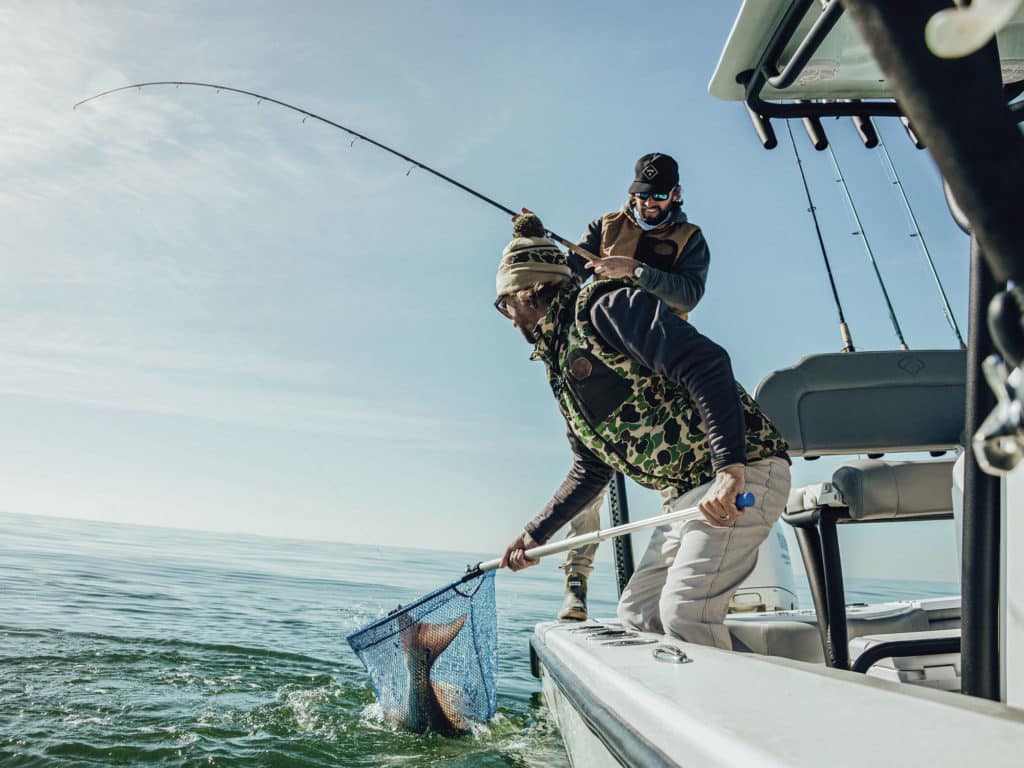
Mullet rigs account for the bulk of the redfish, while pink Zoom soft-plastics rigged on 1/4- to 3/8-ounce leadheads tend to fool more speckled trout.
“Specks seem to hit at Hereford Inlet and off the Cape May jetties,” says Dilks. “Redfish hotspots are in 40 feet of water at McCrie Shoal or along Poverty Beach. A few years back, there were hundreds of 20- to 40-pounders caught off Poverty on mullet and Bomber plugs.” And last December, plenty of reds were caught in the Jersey surf, in 56-degree water, on bunker chunks and swimming plugs.
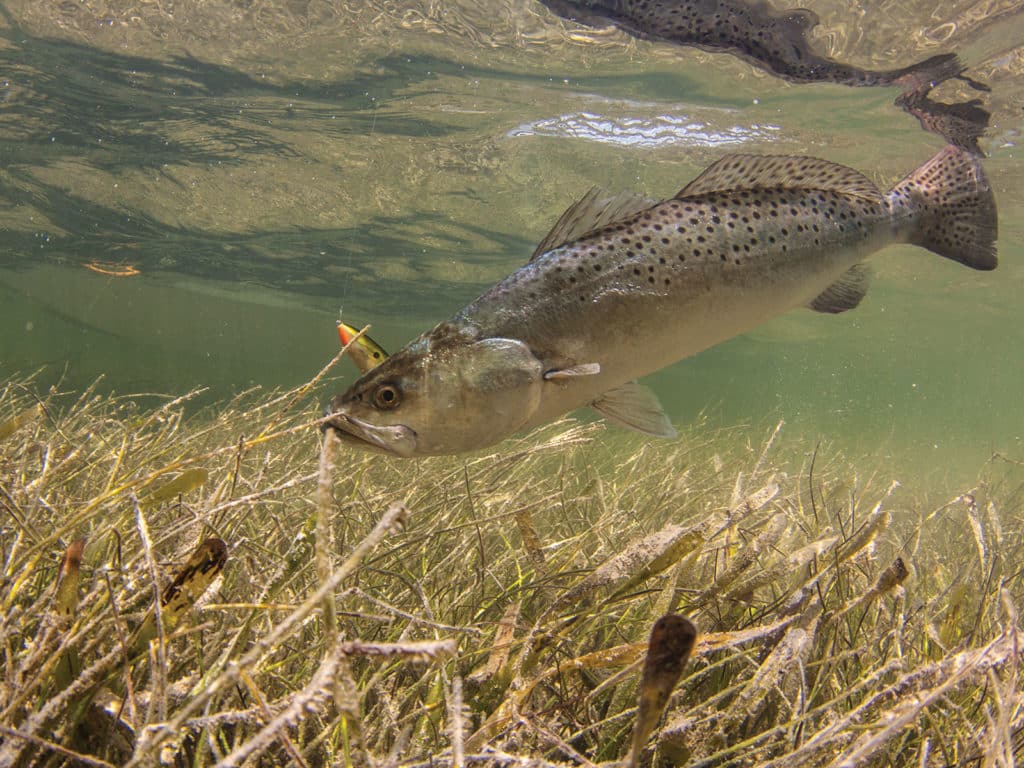
Whether due to warming oceans, habitat restoration, a cyclical phase or a combination of many factors, more and more historically southern species are migrating up to the Northeast.
Brush up on your tactics and, aside from the usual suspects, your catches the next decade could include a number of gamefish that until recently were considered exotic in New Jersey and New York waters.
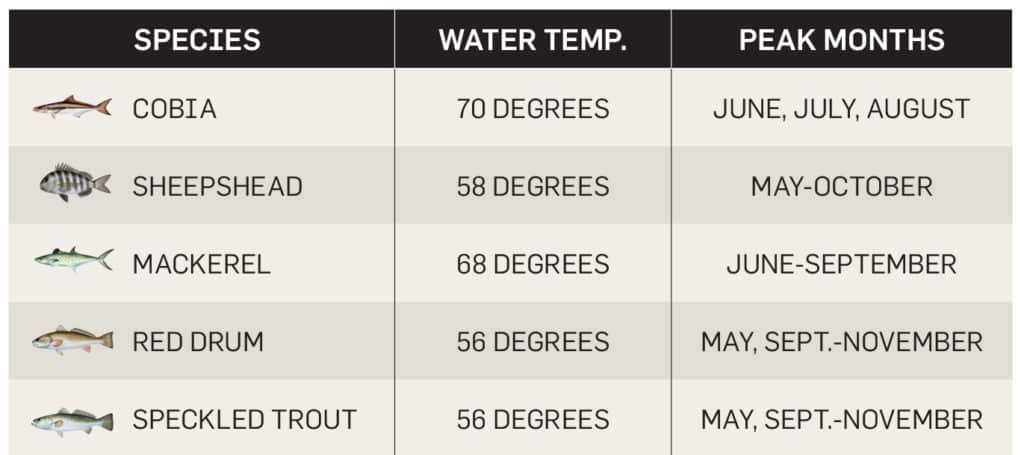
SWS Planner
- What: Sheepshead, cobia, Spanish and king mackerel, redfish and speckled trout
- Where: New Jersey and New York waters
- When: May through September
- Who: These Northeast charter captains target a variety of inshore and nearshore species, and can shorten your learning curve:
Sea Isle City, New Jersey
Capt. Al Crudele
Bayhound Charters
609-602-2662
Stone Harbor, New Jersey
Capt. Dan Schafer
Insomniac Guide Service
609-780-5124
Staten Island, New York
Capt. Frank Crescitelli
917-468-4817









